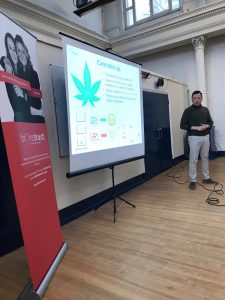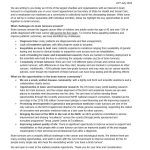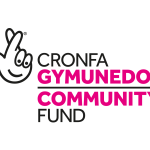What do medical cannabinoids mean for people with a brain tumour?
Medical cannabis and cannabis-based products have been making the headlines recently, with many people from the brain tumour community wondering what the latest developments might mean for them. A hot topic at our patient and carer meetups and workshops, and the subject of many calls to the brainstrust helpline, we were keen to respond to our community’s need to know more.

brainstrust workshop on cannabinoids
An expert in this field, Dr Wai Liu, agreed to come and talk to us about this, and so we held an information session last week in central London on this most fascinating topic. Dr Liu is a Research Fellow at St George’s University of London whose work focuses on developing novel approaches against cancer. These involve modifications to drug regimens as a way of enhancing the overall activity of chemotherapy. One of his current projects include is the investigation of cannabinoids and their potential anti-cancer properties.
Dr Liu’s presentation took us back to basics to explain the fundamentals of the mutations that cause cancer, and he then went on to explain how different types of cannabinoid can interact with this process. He informed us about clinical trials that are taking place and results that have been seen in the lab, but cautioned of the importance of timings and contra-indications with other vital medical interventions, as well as the potential of causing harm.
Feedback from attendees
As with any brainstrust event, one of the most valuable components of the experience is for patients and carers to have the opportunity to learn from one another. With so much patient expertise in the room, and so many engaged and informed individuals, there was much lively debate and plenty of valuable connections made.
Thank you so very much for organising this – I really learnt a great deal. It was so informative to learn the latest thinking and research on the topic from someone who is at the forefront of work in this field. I am always wary of Dr Google! It was also great to have the opportunity to network with other people who either have a brain tumour, or support someone who does.
Today was a fantastic meeting, thank you. It was brilliant to hear Dr Liu talk but also just as brilliant to meet passionate people. I’ve made some excellent contacts which will help me manage the tumour better and better.
Accessing more information
To support our community in their need to understand more about this most topical and compelling subject, brainstrust has produced an information sheet on medical cannabinoids and brain tumours. This sets out the facts as we currently know them, and as they currently relate to our community. This will be on our website soon, but if you would like us to send you a copy of this please get in touch via hello@brainstrust.org.uk.
We are so grateful to Dr Wai Liu for so generously giving his time to support our community.
For further reading in this area please also see: http://scienceblog.cancerresearchuk.org/2012/07/25/cannabis-cannabinoids-and-cancer-the-evidence-so-far/
Twitter: @Wai_Lui









